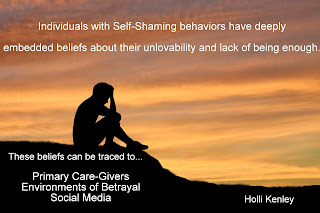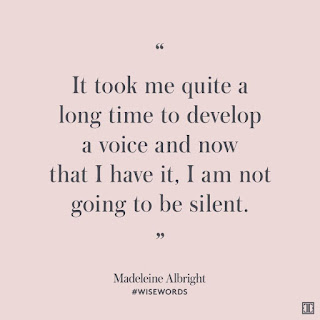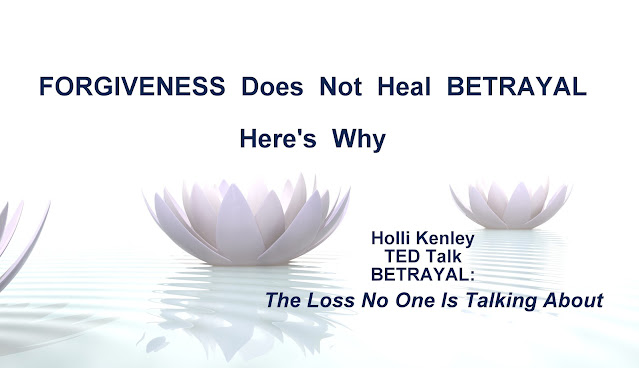From Self-Shaming To Becoming Enough: Week Two - External Causes
Week Two - Self-Shaming: External Causes
In week one of our series, we examined, "Self-Shaming: Increasing Our Understanding," We learned that Self-Shaming is the cognitive and behavioral practice of self-devaluation which manifests as the result of feeling shame or being shamed by someone or something. Although there are other manifestations of Self-Shaming behavior, we focused on the intrusive presence of our self-deprecating life-messages which fuel and feed our feelings of unworthiness and inadequacy. We also discussed how Self-Shaming thrives in secrecy and silence, as individuals are fearful of disclosing their true feelings for risk of being further blamed and judged.
In week one of our series, we examined, "Self-Shaming: Increasing Our Understanding," We learned that Self-Shaming is the cognitive and behavioral practice of self-devaluation which manifests as the result of feeling shame or being shamed by someone or something. Although there are other manifestations of Self-Shaming behavior, we focused on the intrusive presence of our self-deprecating life-messages which fuel and feed our feelings of unworthiness and inadequacy. We also discussed how Self-Shaming thrives in secrecy and silence, as individuals are fearful of disclosing their true feelings for risk of being further blamed and judged.
As we move into week two, “Self-Shaming: External Causes," this is important.
Therefore, as you read this section and find yourself reflecting about your external causes of Self-Shaming, you may experience feelings of guilt or shame. This is understandable. If needed, pause and take a deep breath. Then continue.
Given any sensitive or tender topic such as Self-Shaming, it
is often difficult to examine sources of our pain. It requires that we remain
open, as we courageously face the truths around people, places, and things
which have caused and may continue to bring injury into our lives.
Therefore, as you read this section and find yourself reflecting about your external causes of Self-Shaming, you may experience feelings of guilt or shame. This is understandable. If needed, pause and take a deep breath. Then continue.
Let’s take a look at several external causes.
- Primary Care-Givers
- Environments of Betrayal
- Social Media
Primary Care-Givers
Most individuals form their truths about themselves as early
as age five. Their feelings of being worthy of love, their degree of mattering,
their levels self-efficacy, and their sense of belonging are shaped by their
primary caregivers. In "Pilates For Parenting: Stretch Yourself & Strengthen Your Family" I share with parents and
guardians, “Everything you say and do with your children matters. Everything
you don’t say and do with your children matters.” In other words, how we show
up for our children and how we parent them will drastically impact our children’s
sense of worth and adequacy.
Most clients entering therapy with Self-Shaming behaviors
have deeply embedded beliefs about their
unlovability and lack of being enough. These Self-Shaming life-messages can be
traced back to their primary care-givers who, either knowingly or without
concern , shamed their children – emotionally, psychologically, and physically.
Recently, a client who claims to come from a close, loving family reluctantly
and tearfully disclosed how she has endured years of constant ridicule and
intense criticism by her father. To this day, she “does not quite measure up to
his standards.” While she is a beautiful, successful young lawyer, her
Self-Shaming messages reflect a deep self-loathing regarding her appearance and
a profound sense of insecurity in her abilities.
Over many years in practice, I have worked with successful
business owners, doctors, nurses, teachers, service industry workers, and individuals
from every walk of life whose primary care-givers were unable, incapable, or
unwilling to parent them in healthy
ways. While it often feels like we are betraying those we care for or love by
naming them as sources of our Self-Shaming, it is a critical first step in
reclaiming our voices, our truths, and ourselves.
Environments of Betrayal
Although there may be some cross-over in identifying
external causes of Self-Shaming, a second and more inclusive source are Environments
of Betrayal. Based on my research in
"Breaking Through Betrayal: And Recovering The Peace Within 2nd Edition," Environments of Betrayal include any and all people, places, and
things which meet at least one of the following criteria:
1) An investment into someone or something met with
abandonment or rejection
Examples include investing into a marriage,
partnership, friendship, profession, or organization
2) A profound trust in someone or something which is profoundly
violated
Examples include trusting in a personal
relationship, a business partnership, a financial, legal, or educational
institution, or a faith-based organization.
3) A belief which is a shattered or a truth which
becomes a lie
Examples include believing someone or
something represents a certain quality or characteristic which then is proven
false; or being told a “truth” about yourself, or someone or something
which is then negated by facts, or by secrets being exposed.
Regardless of the kind of betrayal, this is important. When
we are betrayed by anyone or anything, we navigate through three debilitating
states of confusion, worthlessness, and powerlessness. Of the three, the most excruciating
is the state of worthlessness. There are several reasons for this:
1)We have come to know that what we believed to be
true about our degree of value or mattering is not true.
2) We have come to know that some other person,
place, thing, opportunity, need, or desire is more valuable than we are.
3) We have come to believe that we are not
important or valuable at all.
As we begin to process these painful realizations about our
lack or worth, we internalize and integrate them into our Self-Shaming
life-messages. In order to comprehend the intensity and severity of a
betrayal’s impact on us and our Self-Shaming, it is important to understand the
following two concepts:
First, the degree to which invest, trust, or believe
in someone or something
is a predictor to the degree of betrayal injury.
In other words, the
more we have given, the longer we have invested, and how deeply we trusted or believed
in someone or something, when we are betrayed the more unworthy or inadequate
we will feel. It may be a relationship we have invested in, a job we have
sacrificed for, a belief we’ve tethered ourselves to, an organization we have
supported, or a family we’ve tried to hold together. Our Self-Shaming shows up in
life-messages such as the following: “I
am so stupid. I should have known. I
don’t matter at all. I am not enough. I
am so ashamed of myself. What did he have that I didn’t? Who do I think I am?”
Secondly, the degree of exposure to the betrayer and
the betrayal environment
is a predictor to the
degree of re-injury, and thus,
the reinforcement of Self-Shaming
behaviors.
This is important. In working with clients who have chosen
or who have been able to remove themselves from their betrayers and betrayal
environments, deconstructing their Self-Shaming life-messages and reconstructing healthy life-messages comes with hard work.
For those who have not been able to do so, it is possible to recover their
worth; however, the process is often interrupted by periods of relapse into Self-Shaming behaviors such as intense
self-blaming and self-loathing.
For my client who is the successful lawyer, she is committed
to the process of reclaiming her truths and herself. However, she is expected
to attend frequent family gatherings. Each time she does so, her Self-Shaming
life-messages are triggered by her father’s abusive nature and her family’s
indifference to it.
She recently asked, “Holli, will I ever feel like I am
enough?”
In my response, I have encouraged and supported her. “As you continue the hard work of learning how
to detach your worth from your father, a
source which has proven unworthy of your investment, over time you will discover
your voice and you will define your worth.”
More on this topic with access to healing strategies is
available in "Breaking Through Betrayal: And Recovering The Peace Within 2nd Edition" (Chapter 6: Breaking Through The Bonds of Betrayal...And Beyond).
Social Media
The third external cause of Self-Shaming includes all forms
of social media. Our relationship with technology is important. It serves us in
many valuable ways. It has become our primary means of communication and social
interaction. However, as our reliance upon technology has increased to connect
with others in helpful and healing ways, so has the ease by which to harm one
another.
Through social media platforms or other forms of electronic
communications, shaming one another has become a normative behavior. Every day,
we see Tweets which belittle, berate, and bully individuals. Other commonplace
shaming behaviors include the following: excluding, teasing, taunting, outing
(sharing something private or held as a secret), spreading rumors or gossip,
and social combating (ganging up on an individual). The list of dehumanizing,
degrading, and damaging behaviors is endless.
Tragically, shaming others through social media brings with
it a uniquely destructive component. The cascade of cruelty imposed upon
innocent individuals through public shaming and its viral exposure intensifies
their injuries and magnifies their Self-Shaming life-messages. Victims of
chronic online shaming often disclose the following: “I am better off dead. I
need the pain to stop. I am nothing.
Everyone is better off without me.” These intolerable feelings of
hopeless, helplessness, and humiliation are exacerbated due to the lack of
accountability for the perpetrators’ wrong-doings and by the repetitious
shaming of bystanders.
Over a decade ago in the United States, several precious
young individuals Megan Meier , Amanda Todd, Ty Field-Smalley, and Tyler Clementi – took their own lives as the result of chronic, horrific cyber
bullying and relentless bullying. Because the shaming they endured was so
severe, their cases made national headlines. Tragically, in the United States
today, cyber bullying and bullying statistics continue to climb. Credible
researchers such as the Cyber Bullying Research Center have found this to be a contributing factor in the sharp rise of young childhood
and teen suicide. While we cannot control
the online shaming behaviors of others, we can re-evaluate our
relationship with technology and establish strong boundaries around our social interactions.
In addition, we can intervene by standing up for individuals who are being
shamed.
In closing, becoming aware of external causes of
Self-Shaming is a beginning. Identifying
and naming their places of origin is even more important. Through understanding
and knowing there are causes or reasons for our Self-Shaming, we begin
the powerful healing process of releasing ourselves from self-blame and
self-devaluation and of uncovering our worth.
Reflective Exercise :
Next time, “Self-Shaming:
Internal Causes.”





Comments
Post a Comment